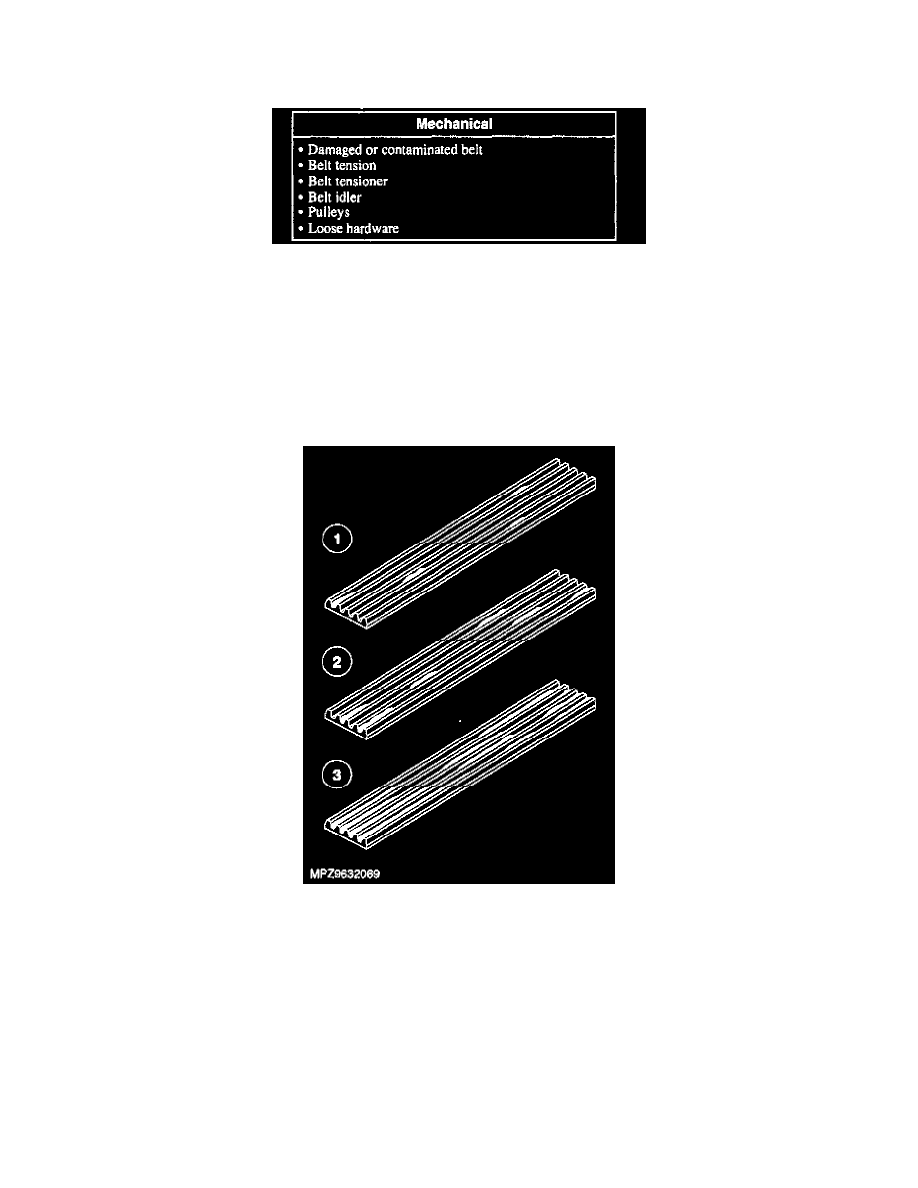Focus ZTS L4-2.0L DOHC VIN 3 (2001)

Drive Belt: Initial Inspection and Diagnostic Overview
1. Verify the customer concern by operating the system.
2. Visually inspect for obvious signs of mechanical damage.
Visual Inspection Chart
Visual Inspection Chart
3. If an obvious cause for an observed or reported concern is found, correct the cause (if possible) before proceeding to the next step.
NOTE: Up to 15 cracks in a rib over a distance of 100 mm can be considered acceptable. If damage exceeds the acceptable limit or any chunks
are found to be missing from the ribs, a new belt must be installed.
Under no circumstances should the belt or tensioner be lubricated as potential damage to the belt material construction and tensioner damping
mechanism could occur.
4. The condition of the drive belt should be compared against the illustration and appropriate action taken.
Small scattered deposits of rubber debris. This is not a concern therefore a new belt should not be installed.
Longer deposit areas building up to 50% of the rib height. This would not be considered to he a concern but it could result in excessive noise. If
noise is apparent a new belt should be installed.
Heavy deposits building up along the grooves resulting in a possible noise and belt stability concern. If heavy deposits are apparent a new belt
should be installed.
